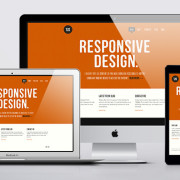Your brand is one of your company’s most valuable commodities. It goes way beyond a cool logo, catchy jingle, or memorable tagline. The brand is a total customer experience that should be the foundation upon which your entire organization is structured and developed from day one. A lot of smaller companies fail to understand the impact of a cohesive, long term brand strategy and carelessly neglect spending the time to focus on one. It should be an ongoing high priority, not an afterthought that results in a scattered, wavering effort. Your branding shapes your reputation, credibility, and the feeling people get about your product or service. If it isn’t implemented and maintained correctly it can be a real hindrance to your company and the way it is perceived.
Here are 5 ways good branding can help your business:
1. Makes You Unique
Chances are, you aren’t the only one out there doing what you do or selling whatever you sell. It is essential to stand out from the crowd and find a way to motivate customers to choose you over your competitors. To make it even harder, due to the internet you may actually be competing globally. Distinguishing yourself and leaving a positive impression, both visually and emotionally, can give you the edge you need. Original, unforgettable branding that successfully projects your incomparable benefits will set you apart.
2. Creates Focus
Every company needs to have a vision, a mission that the entire organization can aim for together. A comprehensive brand with tight standards in place can guide all your marketing efforts into alignment. When employees are all on the same page with the same goal in sight, bad individual decisions are decreased and desired outcomes are achieved.
3. Helps You Connect
You want people to feel good when they buy your brand. With everyone reviewing your product or service online these days, a good experience can go a long way. Customers are more comfortable when they know what they’re going to get and tend to do business with companies they are familiar with. When you can consistently fulfill their expectations, you gain their trust and their repeat business. This in turn prevents new competitors from stealing them away as loyal customers are less likely to switch.
4. Generates Referrals
You always want to be attracting new customers as well. There is no easier way to draw attention than letting others do it for you. When your friends love a certain brand, they are walking advertisements for it. They wear it with pride and can’t wait to show it off, introduce you to it and essentially sell you on why it’s the best. These word of mouth peer endorsements are crucial for a brand to gain momentum and go viral. Furthermore, if a brand is lucky enough to garner the influence of celebrity endorsements the outreach can spread tremendously.
5. Assigns More Value
A growing brand can create a value that far exceeds actual physical value. Good brands build persisting emotional relationships with consumers who love and remain loyal to their products. The following that evolves helps to spread a sense of quality and belief in the superiority of the company. That prestige justifies charging more and people will proudly pay a premium for something they think is better. Branding is selling. Once devoted attachments are made to a particular brand, it guarantees future business which increases inherent value.
Where to Start:
Define Yourself and Your Target Audience
You can’t be everything to everyone. Are you the innovative, young start-up or the experienced, mature firm? Are you the high quality, expensive option or the common, bargain choice? What do customers want from you? Do some homework, have some analytics in place to learn their habits and cravings. Realizing your true identity and determining a clear target early on will create a more efficient directive instead of wasting resources by casting a wide net and hoping.
Create Your Face and Voice
A great, memorable logo is the primary component of your brand. It’s the probably the first thing people are going to see and it needs to make a good impression. Sorry but that free clip-art you found online or that sketch from your teenage daughter is not going to cut it. Nor is your tired tagline that states “For all your (insert trade) needs”. Bite the bullet and work with a professional designer to perfect your visual identity and motto that captures and communicates the essence your brand. Then use it to get the word out. Leverage social media. Plaster it everywhere – all promotional materials, advertising, packaging, website, correspondence, internally and externally – every single place is an opportunity to increase awareness.
Be Consistent
Control and protect the brand with strict Brand Standards for all your marketing materials. Publish guidelines for logo usage, color palettes, typography, taglines, and any other brand principles or restrictions you wish to establish. Hundreds of different, mutilated versions of your logo will spread across the internet and mar your brand if you let it. Consistency is imperative for making your mark memorable and long lasting.
Integrate Your Brand
The brand you develop should permeate every aspect of your business, not just outwardly but internally as well. Company policies and practices should be spelled out to provide direction and create unity among the staff. If your employees believe in the brand, it will resonate. How they act, what they say, what they wear, all represents your company just as much as your commercials or social media announcements. In today’s connected world, even your political, environmental or cultural views and affiliations can have a big impact on your business. Everything you put out there is your brand. Make sure everyone is delivering the right message.
GCP has been building brands for 20 years. We can help create and manage your new brand or reinvent your existing one. Take a look at some of our recent branding solutions.












